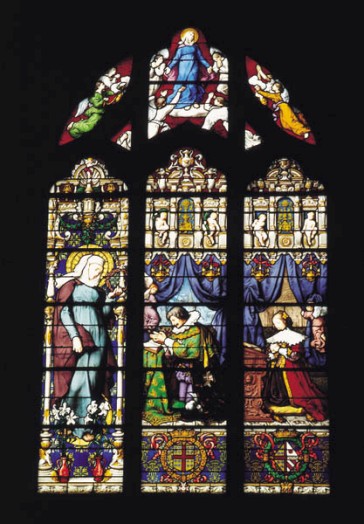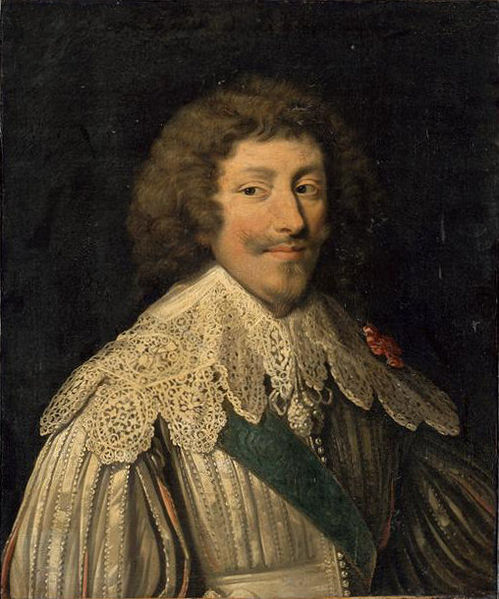
Henri II de Montmorency and his wife Marie Félice des Ursins
I like to think that Pezenas, La Grange des Pres, Beziers and Montpellier come out ahead by having served as the stage where the dramatic story of Marie-Felice des Ursins takes place, both in its happy and somber hours.
No sooner did she set foot on the ground of her adoptive motherland than the young Roman—as she called herself—begins to shine on the grand stage of the royal Court. She holds her rank with perfect poise, dealing with the two queens, Marie de Medicis and Anne of Austria.
Chantilly—not as sumptuous as it later becomes under the Condé family, the splendid residence that will one day lodge the most illustrious people in all of France—Chantilly pleases her because of “its waters, rocks and woods,” that will take on, in time, “a soul and voice of their own,” to recall a passage from this sweet chatelaine. But she is most attracted and drawn to “the domain governed” by her dear husband, in other words, to Languedoc and Montpellier.
She goes there as often as possible to stir up the most sincere and lively enthusiasm and augment even more, through her charming piety and charity, the popularity already enjoyed by the young duke of Montmorency.
For seventeen years, from the year of her wedding to that when her husband is wrenched away from her, the Duchess loved our towns and countryside the more, because it is here that she was able to do the most good. It was also here that she could display her ardent love for her husband without anyone finding it strange.
What a contrast between these two spouses, so closely united, and whose happiness or misfortune, as Bossuet put it, will attain the apex of human existence!
Here is a gentleman of good appearance, with fine features, in spite of a kind of strange gaze. He has the size and bearing of a legendary hero; and no one can think of his exploits without evoking the idea of those fabulous warriors whose courage spurred them to the most daring feats.
In an army whose leaders are all really brave and have become illustrious in a hundred battles, Henri de Montmorency surpassed all his lieutenants in audacity and impetuosity. “For him, life is less than nothing wherever there is glory to be gained.” Accordingly, at the beginning of the war in Piedmont, when Cardinal Richelieu asked him “for God’s sake” to support his policy by attaining a resounding victory, the Duke alone “defeated fourteen or fifteen companies of German bands, after charging them exceedingly hard.” Likewise, in front of the Parliament in Toulouse, a captain in the royal army said that while watching the combat at Castelnaudary he saw a man push through six rows of troops and still kill more soldiers in the seventh row, and he figured it could only be M. de Montmorency.”

Marie Felice Orsini, Duchess of Montmorency in the garden of Chantilly, by the pond. Painting by Luc-Olivier Merson
Yet that awesome general, so heedless of danger, was at the same time gentle with his men, merciful toward the poor, kind in his demeanor, elegant and distinguished in his manners, charming, likeable and witty. He was an accomplished knight. For a long time, he was easygoing in his conduct, attached to exterior things and a lover of the easy life; and while never ceasing to be tender and respectful toward his spouse, he inflicted upon her the torment of a justifiable jealousy. But in the end, Marie-Felice’s silent patience and muted resignation triumphed over the mindless bursts of his careless and impressionable temperament. Of his own accord, Henri de Montmorency placed himself under the yoke of his graceful spouse and swore never again to make her languish in tears and supplications; and he kept his word.
M. R. Monlaur, La Duchesse de Montmorency, 1600-1666 (Paris: Librairie Plon, 1922), pp. x-xiii. From the preface by Most Rev. Marie-Anatole de Cabrières, Bishop of Montpellier. (Nobility.org translation.)
Short Stories on Honor, Chivalry, and the World of Nobility—no. 141










